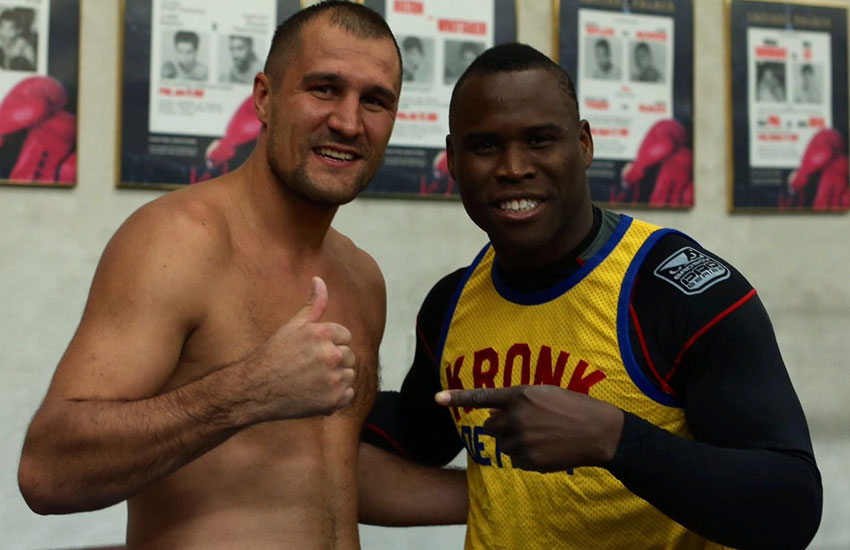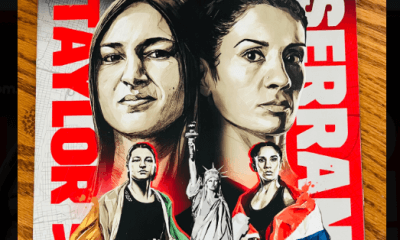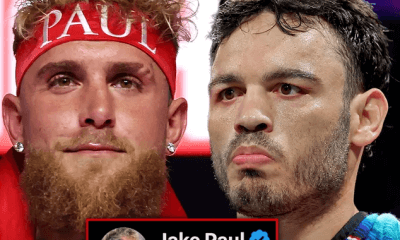Featured Articles
Three Punch Combo: Bold Predictions for 2018 and More

THREE PUNCH COMBO — The end of the year is upon us and it is time to look forward to what could happen in 2018. Every year there are at least a few surprises that seemingly come from nowhere in the sport. For example, this year we saw a landmark broadcast deal involving Top Rank and ESPN. So what surprises could be in store for 2018?
The 175-pound division is deep and seemingly getting deeper by the minute. There are a lot of big fights to be made and probably several will occur in 2018. But what about the bout that has eluded the division for years? Could 2018 finally be the year we see Adonis Stevenson step up to face Sergey Kovalev? If a few chips fall into place, the ingredients are finally there for this fight to take place toward the tail end of the year.
The main reason this fight has not taken place yet is Stevenson. One of the last fighters trained by Emanuel Steward (the Kronk Gym maker of champions died in 2012), Stevenson has avoided Kovalev for years, content to feast on inferior opposition while making good money defending his belt in Canada. But a few things are changing. For one, PBC does not have the same outlets that it did in the past where quality control was not always a concern. Stevenson, to make the money he commands, must fight on premium cable with the only realistic option being Showtime. And though Showtime did telecast Stevenson’s last bout against Andrzej Fonfara, a bout widely considered a mismatch, they disney princess bouncy castle are apparently reluctant to give Stevenson that luxury going forward. Hence, we may see a Stevenson defense against Badou Jack on Showtime in the first part of 2018 which would represent far and away the toughest test for Stevenson since he won a 175-pound belt in 2013.
If he beats Jack, Stevenson will then be looking down the barrel at facing some of the young, hard hitting, skilled opponents that have come on the scene. He won’t be able to revert back to the likes of Dmitry Sukhotskiy or Tommy Karpency because Showtime will have no interest.
So if Stevenson, who turned 40 in September, is going to have to face a dangerous opponent, he will probably pick the one that economically makes the most sense. And guess which fighter could now be on his radar? Yes, Sergey Kovalev.
Kovalev has a planned fight in March and can probably get away in that contest with someone like Joe Smith. It is a dangerous fight for Kovalev, but one that he’d still be substantially favored to win. If Kovalev wins, he is looking down the barrel at the same situation as Stevenson. And that is a high risk, low reward opponent.
There is animosity between the camps of Stevenson and Kovalev, but boxing economics will outweigh these concerns. The options are simple. They can face someone like Artur Beterbiev, Oleksandr Gvozdyk or Dmitry Bivol for a six figure payday or face each other for seven figures. It is risk/reward scenario and even Stevenson is bound to come to his senses to finally make the fight we have all wanted to see for years.
Second Bold Prediction
In 2017, we saw big changes in the televised coverage of boxing in the United States. Top Rank struck gold with an output deal with ESPN. Golden Boy Promotions also scored an output deal with ESPN. Online streaming of boxing cards took off and gave fight fans a new platform to watch bouts that were previously inaccessible.
Quietly too, Al Haymon’s PBC venture started to drift in a different direction. Haymon lost some television partners and produced fewer shows on the outlets he still had in place. PBC went back toward putting their bigger fights on Showtime. A big question in the sport is what will PBC look like in 2018?
My second bold prediction for 2018 is that in the first quarter of the year we get a major announcement from PBC. Say what you will about Haymon but he is always thinking big. With only a handful of cards under the PBC banner on the schedule so far in 2018 (all on Showtime), something is coming and that something will be huge. Remember too, Haymon still has a lot of fighters whom he serves as an advisor and needs to get these fighters regular work.
My guess is that Haymon is working on a big output deal. It will involve one network and follow the traditional model in the sport where that network pays a license fee to broadcast boxing cards. It may or may not involve a network from his previous buy time agreements, but whatever it will be, that network will partner with Haymon similar to what ESPN is doing with Top Rank. That means a commitment from the network which Haymon did not always have under the previous buy time arrangements and also mean more quality control for the cards that are broadcast.
In addition, it has long been speculated that at some point Haymon will delve into online streaming and I expect him to launch his own online streaming platform in 2018. This would be an avenue where he could keep fighters busy. It would be more suited to showcase upcoming prospects as well as involve tune-up fights for more seasoned veterans. The UFC is doing something similar and expect Haymon’s online platform to be molded in the same manner.
Haymon is a very smart man and knows he needs to counter what Top Rank and others did in 2017. Expect Haymon to do so in the first part of 2018 with a major announcement that will shake up the boxing world.
Remembering a Forgotten 122-Pound War
December 19th marks the 20th anniversary of the classic battle between “Prince” Naseem Hamed and Kevin Kelley. The bout was a war that featured several knockdowns and was instantly proclaimed by Larry Merchant as the “Hagler-Hearns of the featherweight division.”
However, an equally exciting bout took place on the undercard between Junior Jones and Kennedy McKinney. Jones (44-2, 26 KO’s) held a 122-pound title and was coming off two huge wins against future Hall of Famer Marco Antonio Barrera. McKinney (32-2-1, 18 KO’s) was a former Olympic gold medalist but had to this point fallen short of expectations. This was expected to be a solid match of two skilled boxers but turned into something entirely different.
The first round did start out as a boxing match with both Jones and McKinney working behind a left jab. They each also found a home in spots for sharp right hands behind the jab. But toward the end of the round, a shootout began with both slugging it out at the bell.
The slugfest that started at the end of the first continued as the bell sounded to start round two. Both landed some big shots but it was Jones who was busier and landing the cleaner and harder shots. He even momentarily wobbled McKinney with a left that landed with about a minute remaining in the round. All in all, it was a big Jones round but he also unloaded a high volume of punches with maximum effort.
The two continued to trade bombs into the third. About halfway through the round, Jones landed a big right hand that put McKinney on the canvas. McKinney would rise a bit shaken and Jones would jump on him seeking the end. Jones unloaded the kitchen sink but was unable to hurt McKinney during the follow-up barrage. As McKinney began to regain his wits, he started to throw and land right hands in between Jones’ punches. It was thrilling action and the round ended with both appearing to be on shaky legs.
Jones had unloaded a huge amount of power punches in the first three rounds and appeared to be sucking for air as the fourth commenced. McKinney began to find a home for a short, quick, well-timed right hand that landed flush on Jones’ chin on several occasions. With the tide swinging, McKinney threw one of those short quick rights as Jones was coming forward looking to throw a right of his own. McKinney’s landed first with full leverage and Jones collapsed to the canvas. Hurt and exhausted, Jones arose but had no legs and fell forward to the canvas again. Referee Wayne Kelly did not hesitate to stop the contest at this moment, awarding a TKO win to McKinney.
Because of what happened in the main event, many fans quickly forgot about the action they witnessed in the McKinney-Jones fight. But it was a truly special bout and deserves to be recognized on this, the 20th anniversary of the contest.
Check out more boxing news on video at The Boxing Channel.
-

 Featured Articles4 weeks ago
Featured Articles4 weeks agoAvila Perspective, Chap. 330: Matchroom in New York plus the Latest on Canelo-Crawford
-

 Featured Articles3 weeks ago
Featured Articles3 weeks agoVito Mielnicki Jr Whitewashes Kamil Gardzielik Before the Home Folks in Newark
-

 Featured Articles22 hours ago
Featured Articles22 hours agoResults and Recaps from New York Where Taylor Edged Serrano Once Again
-

 Featured Articles4 weeks ago
Featured Articles4 weeks agoCatching Up with Clay Moyle Who Talks About His Massive Collection of Boxing Books
-

 Featured Articles5 days ago
Featured Articles5 days agoFrom a Sympathetic Figure to a Pariah: The Travails of Julio Cesar Chavez Jr
-

 Featured Articles3 weeks ago
Featured Articles3 weeks agoMore Medals for Hawaii’s Patricio Family at the USA Boxing Summer Festival
-

 Featured Articles1 week ago
Featured Articles1 week agoCatterall vs Eubank Ends Prematurely; Catterall Wins a Technical Decision
-

 Featured Articles4 weeks ago
Featured Articles4 weeks agoRichardson Hitchins Batters and Stops George Kambosos at Madison Square Garden




















